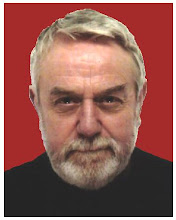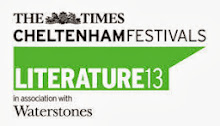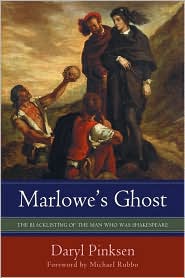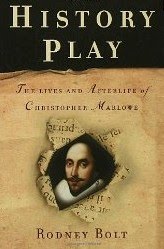A response to two of Jonathan Bate’s attempts to explain Shakespeare’s “anonymous death."
In Mike Rubbo’s documentary Much Ado About Something, Jonathan Bate explains, “The writers who die and immediately elegies come rolling off the presses, tend to be writers who die in mid-career." He adds that Shakespeare completed his career and returned quietly to Stratford, thereby creating the conditions where there wasn’t much interest at the time that he died: “He wasn’t hot news, he died in Stratford, he didn’t die in London and news tended not to travel at that time; there was no news media." In Shakespeare’s Face (2007) by Stephanie Nolen, Bate seems to be asserting that playwright Francis Beaumont’s death took the attention away from Shakespeare when the Stratford man died. After all, "theatre is a fickle business," he argues, and Shakespeare at the time of Beaumont's death was "yesterday's man."
First, I will be fair to Bate in that, despite his comments in Rubbo's documentary justifying the lack of reaction to Shakespeare’s death, it seems, from Shakespeare’s Face, that Bate intended to explain news "delay" rather than "non-delivery." I can accept a delay of some sort, but the actors Heminges, Condell and Burbage would have soon learned of Shakespeare’s demise when receiving his bequests.
Before we blindly accept Bate’s claim that Beaumont died “in the prime of his writing," we must expand slightly on the final period of his career, in order to make a reasonable assessment of Bate’s assertion. Beaumont starts writing for The King’s Men around 1609, whilst Shakespeare is presumably still involved with the company. Beaumont marries a wealthy heiress, has a stroke and all but retires to Sundridge, Kent in 1613. He produces his final poem soon after his stroke, an elegy to Lady Penelope Clifton, in 1613. His successful Masque of the Inner Temple and Grayes Inne, performed February 1613, was subsequently inserted into The Two Noble Kinsmen, supposed to be by Shakespeare and Fletcher. We have no record of Beaumont writing any drama after February 1613. That said, I believe he may have been revising The Scornful Lady (predominantly Fletcher’s work) until as late as May 1615. According to an elegy on Beaumont by a fellow Leicestershire native, Thomas Pestell, "Death … hire[d] an apoplexe to shend his brain," and he lived on in a melancholic state with “frequent wishes” for death for three years. Bishop Corbet, in his "On Mr. Francis Beaumont (then newly dead)," may allude to the same condition in the line: “Beaumont is dead; by whose sole death appears, Wit's a disease consumes men in few years."
In any event, whilst we may debate whether this is “retirement” or not, I see no grounds for the suggestion that he was at his height in 1616. The fact that Beaumont was in Westminster when he died may be creating a false impression of his currency. Charles Gayley, in Beaumont, the Dramatist: A Portrait (1914),writes: “We must conclude that from 1613 he lived as a country gentleman. …the probabilities all point to the manor house in Kent as the scene of Beaumont's closing years. Sundridge Place…in which, we may presume, Beaumont and Ursula lived, and where his children were born…” This opinion seems to paint a very different picture to the working poet, living amongst his peers in London and dying in mid-career. It appears correct that Beaumont died in London, but does that really tell the full story of the man’s last three years? I feel it somewhat reassuring that in Shakespeare's Face, Bate himself provides his support for this view. He writes of Beaumont’s correspondence to Jonson, “Beaumont wrote two verse epistles from the country…One of them is nostalgic for literary company and ‘full Mermaid wine’." Therefore, Bate highlights both points for us: that Beaumont was in the "country" and that he was not in "literary company." Moreover, the fact that he is "nostalgic" for it suggests he had been away for some time. Beaumont dies March 6,1616, and three days later on March 9 is interred in Westminster Abbey next to Chaucer and Spenser.
Both Beaumont and Shakespeare "retired" around 1613 and Bate’s assertion (that Shakespeare did not die in mid-career) applies almost equally to Beaumont. Some claim that Shakespeare was substantially out of London from around 1610. However, we must not overlook that Stratfordians believe Shakespeare co-wrote The Two Noble Kinsmen (containing Beaumont’s Masque) in 1613-14 with Fletcher, Beaumont’s writing partner. This was later than any known Beaumont plays. Furthermore, we know Shakespeare purchased a home in the Blackfriars (putting him in London and in the same circles) in 1613. Perhaps even more significantly, Thomasina Ostler (daughter of Shakespeare’s friend, Heminges), seems to believe he is still a sharer in the Globe Theatre in May 1615. It is hard to reconcile these facts with Bate’s assertion that Shakespeare was “yesterday’s news." In fact, given all that we see here, it seems difficult to make any dramatic distinctions between their two situations except for the age difference – unless we allow for the possibility that Beaumont was a highly regarded poet/playwright and Shakespeare of Stratford was not.
I believe even the least perceptive of readers would expect some reaction from Burbage, Heminges and Condell on hearing of their friend’s death. Surely, they would be moved to comment on this cruel twist of fate. The fact that they had (supposedly) lost two of their most significant playwrights, within the space of 48 days, would surely be worthy of a public outpouring of grief, even more so than the death of either individual alone. It is a truism that noteworthy events, particularly tragedies, heighten our awareness to similar ones that occur in the following weeks and months. Following the tragic and untimely death of the wonderful Natasha Richardson, I am sure that, if any skiing accidents or deaths from epidural haematomas occur over the next few months, we will see them appearing as news items. It would be bizarre if this was not to happen and, significantly, such cases will be highlighted irrespective of whether or not any later victims are famous.
Bate asserts that people considered Beaumont dying a far bigger loss than Shakespeare was at that time. Does this sound reasonable based on the details of Beaumont’s final years outlined above? It sounds reasonable to me, since I see Shakespeare of Stratford as a bit-part player in Elizabethan theatre. It does not sound reasonable for a famous poet to be dismissed so easily. Beaumont’s death would be the more upsetting, since he was far younger than Shakespeare was, and that is always tragic; but surely not so much as to obliterate any mention of Shakespeare by his “friends," as Bate calls them.
Theatre owners and producers in Jacobean England were not simpletons. With a stock of 36 plays, they would take the opportunity to bring Shakespeare’s death to public attention, if for no other reason than as a cynical publicity stunt and to cash-in. Modern TV executives do that constantly, and I think it is a folly to assume that Burbage, Heminges and Condell would not have done exactly the same thing, if they had even the remotest sense that the audience would swallow it.
Bate argues that Shakespeare the author was so famous that publishers would forge his name on plays to encourage sales. Stratfordians claim this practice was still occurring in 1619. This author has supposedly written several celebrated poems, 154 Sonnets published in 1609, and around 37 plays (the last possibly as late as 1614). Burbage owes his career to the roles this author created for him and has grown wealthy through these works. We must also assume his co-sharers would have done likewise, due in no small part to this same author. Then, when the Stratford commodity trader dies in 1616, Bate claims this author died too, since they were the same man. We see no reaction whatsoever from anyone whose life the author touched, not a diary entry, not a sonnet, not a thank-you note. We are asked to believe that the reason for this is that, not only had Beaumont died 48 days earlier, but also that Shakespeare died out-of-town and that Jacobean theatrical-types were fickle. In fact, so fickle that, because a man (who co-wrote perhaps five plays for them over seven years) had died seven weeks earlier, they would completely ignore the death of a friend who had sustained them for over 20 years.
Is this really the only logical explanation for the absence of any reaction to the death of Shakespeare, “the soul of the age”? Isn’t it far more logical to assume that, when the Stratford merchant died in April 1616, there was no reaction to the author’s death because no one believed the author had died?
Anthony Kellett
© Anthony Kellett, April 2009
Also by Anthony Kellett: "William Shakespeare, Businessman - Forgotten Genius" and "Shakespeare Scholars: A Lament"
Click here for the blog's home page and recent content. branagh, emmerich, jacobi, jude law
Saturday, April 25, 2009
Saturday, April 18, 2009
Jonathan Bate on “The Rape of Lucrece” and Clopton Bridge by Daryl Pinksen

In Shakespeare’s Face (2002), a book about the Sanders Shakespeare portrait, Jonathan Bate addresses the relatively modern phenomenon of doubting Shakespeare’s authorship in a chapter titled, “Scenes from the Birth of a Myth and the Death of a Dramatist.” He outlines a compelling case with plenty of evidence that the Stratford man, William Shakespeare, was the London actor and theater company shareholder Shakespeare: his name appears on the title pages of printed editions of the plays, contemporaries mention him as the author of those same plays, the First Folio unequivocably assigns authorship to Shakespeare of Stratford, and Ben Jonson and others reinforce the claims on the title page. These are all strong points in Shakespeare’s favour. But in his zeal, in one instance at least, Bate has reached too far.
Bate reports he is convinced only a poet born and bred in Stratford could have written “The Rape of Lucrece," a 1594 poem attributed to Shakespeare and dedicated to the Earl of Southampton. Bate proceeds to roll out what he suggests is incontrovertible evidence to that effect. It has to do with a specific metaphor the poet uses of the turbulent movement of water through the arch of a stone bridge. The poet describes powerful eddies which send the water doubling back on itself, re-entering the arch it has just passed through.
Bate suggests to the reader that the only place where an Elizabethan poet could have observed this phenomenon was in Stratford-upon-Avon. He bases this argument on an observation made by Robert Nye in his 1998 novel The Late Mr. Shakespeare. During his research Nye travelled to Stratford and noticed something extraordinary when he paused on the centuries-old Clopton Bridge to watch the floodwaters pass underneath. Bate explains:
Sometimes it takes a creative eye to identify the fingerprint [of Shakespeare’s background]. Thus the novelist Robert Nye in The Late Mr. Shakespeare, a biographical “faction” of 1998, draws attention to a particularly watery detail:Bate then implies that Nye’s comparison is "proof" that only a Stratford-bred poet could have witnessed the phenomenon described in “The Rape of Lucrece.” Bate concludes with this challenge:
If you stand on the eighteenth arch of Clopton Bridge (the one nearest the point where the road goes to London), and if you watch the River Avon below when it is in flood, you will see a curious thing that Shakespeare saw.
The force of the current under the adjoining arches, coupled with the curve there is at that strait in the riverbank, produces a very queer and swirling eddy.
What happens is that the bounding water is forced back through the arch in an exactly contrary direction.
I have seen sticks and straws, which I have just watched swirling downstream through the arch, brought back again as swiftly against the flood.
The boy Will saw this too. Here’s how he describes it:
As through an arch the violent roaring tide
Outruns the eye that doth behold his haste,
Yet in the eddy boundeth in his pride
Back to the strait that forc’d him on so fast,
In rage sent out, recall’d in rage, being past:
Even so his sighs, his sorrows, make a saw,
To push grief on and back the same grief draw.
That’s from The Rape of Lucrece, lines 1667-73. How many times must he have watched it, perhaps with tears in his bright eyes? 1
Next time you meet members of the anti-Will brigade, ask them on how many occasions their candidate stood on the eighteenth arch of Clopton Bridge in Stratford-upon-Avon and watched the eddying movement of the water. 2I wondered if there were places other than Clopton Bridge where a young Elizabethan poet might have seen the eddying phenomenon described in “The Rape of Lucrece." A second glance at the passage reveals a key descriptor – the poet speaks of a "tide" which is responsible for the eddy effect. Granted, “tide” could have referred to a flood of the Stratford river – at the time “tide” was more generally applied to any strong current – but perhaps the poet meant it in its more specific sense.
Among rivers, the Thames in London is remarkable for being affected by dramatic tides – up to five meters high – creating strong currents upstream and down. Today a system of dams and modern bridges has mostly tamed the violent effects of the tides, so Mr. Nye could not have seen the same Thames that 16th century Londoners saw. If he had, he would have walked across the most famous landmark of Elizabethan London, Old London Bridge, with its tightly spaced stone arches.
I wondered what effect the untamed tidal currents had as they passed under Old London Bridge. A quick internet search led me to Thamesfestival.org, which provided the following description:
Work began on the first stone London Bridge in 1176 under the direction of Peter of Colechurch. The bridge opened in 1199 and survived for over six hundred years. It was a wonder of the medieval world and an icon for the city. Almost three hundred metres long, it had nineteen arches of widths varying from five to ten metres. Its piers sat on boat-shaped platforms (called starlings) that were exposed at low tide. As such, the whole bridge structure acted as a kind of dam, blocking 85% of the river’s width. The rush of water through narrow gaps between the starlings created a waterfall effect with treacherous eddies and currents. Passing between these by wherry, known as ‘shooting the bridge’ was extremely dangerous and there was a popular saying: “wise men walk over London Bridge and only fools pass under it." 3 [my emphasis]The writer of “Lucrece” was familiar with a place where strong tides flowed through arches and produced powerful eddy currents. Unlike the Avon river under Clopton Bridge, which would have created eddies only when the river was in flood, the poet could have seen this same phenomenon at Old London Bridge on any given day, the result of actual tides.
Finally, if the only readers able to recognize the poet’s eddy description in “Lucrece” were those raised within walking distance of Clopton Bridge in Stratford, it would lose much of its power. But if the poet knew that the phenomenom was familiar to every citizen of London, it would have made it an especially effective metaphor, one tailor-made for a London audience for whom the poem was written.
Daryl Pinksen
© Daryl Pinksen, April 2009
Daryl Pinksen, a regular contributor to MSC, is the author of Marlowe's Ghost: The Blacklisting of the Man Who Was Shakespeare. Click here to reach Daryl Pinksen's website.
1Bate, Jonathan, “Scenes from the Birth of a Myth and the Death of a Dramatist,” p. 103-125. Nolen, Stephanie with Jonathan Bate, Tarnya Cooper, Marjorie Garber, Andrew Gurr, Alexander Leggatt, Robert Tittler, and Stanley Wells. 2002. Shakespeare’s Face. Canada: Alfred A. Knopf. p.122-23.
2Bate, 2002, p.123.
3Seen at Thamesfestival.org page 6, accessed April 10, 2009.
Click here for the blog's home page and recent content.
Friday, April 10, 2009
Stanley Wells and the Cobbe Portrait by Ros Barber
 A month ago, Professor Stanley Wells, chairman of the Shakespeare Birthplace Trust, announced the discovery of a new portrait of Shakespeare. Wells, described in the Trust’s press release as “one of the world’s leading experts on Shakespearian studies,” called this portrait “almost certainly the only authentic image of Shakespeare made from life.” The Cobbe portrait, as it is known, has been in the family of Alec Cobbe for centuries. It was for many years believed to be of Sir Walter Raleigh, and it bears a label on the reverse to this effect. “The evidence that it represents Shakespeare and that it was done from life, though it is circumstantial, is in my view overwhelming,” said Professor Wells. “I feel in little doubt that this is a portrait of Shakespeare, done from life and commissioned by the Earl of Southampton.”
A month ago, Professor Stanley Wells, chairman of the Shakespeare Birthplace Trust, announced the discovery of a new portrait of Shakespeare. Wells, described in the Trust’s press release as “one of the world’s leading experts on Shakespearian studies,” called this portrait “almost certainly the only authentic image of Shakespeare made from life.” The Cobbe portrait, as it is known, has been in the family of Alec Cobbe for centuries. It was for many years believed to be of Sir Walter Raleigh, and it bears a label on the reverse to this effect. “The evidence that it represents Shakespeare and that it was done from life, though it is circumstantial, is in my view overwhelming,” said Professor Wells. “I feel in little doubt that this is a portrait of Shakespeare, done from life and commissioned by the Earl of Southampton.”
In the same press release, the Shakespeare Birthplace Trust attempted to discredit the most credible contender for a portrait-from-life, the Chandos, by quoting Park Honan, who notes that the portrait’s “authenticity has been debated.” This is, of course, true of all the portraits suggested as Shakespeare, and indicates nothing more than a responsible scholarly attitude. In an attempt to enhance the significance of Honan’s pronouncement, the press release dubs him “Shakespeare’s most authoritative biographer," a statement that many scholars familiar with Honan’s biographies might consider highly questionable.
Wells’s insistence that the Cobbe portrait is of Shakespeare is even more so, and the case against it was made eloquently by Katherine Duncan-Jones in the Times Literary Supplement. Wells’s belief that the Cobbe portrait “could be the basis for the [Droeshout] engraving” seems to be based on nothing more than wishful thinking, since it bears no resemblance to this or other generally accepted images of Shakespeare. This sitter is considerably younger than the 46 Shakespeare would have been in 1610 when the portrait was painted, and he lacks the high-domed forehead of the Droeshout and the Chandos, possessing instead an aquiline nose and a pointed chin. As Katherine Duncan-Jones and others have noted, the sitter bear a remarkably strong resemblance to an existing portrait of Sir Thomas Overbury.
Why then, would Wells wish to gamble his professional reputation on such an extraordinary claim? The answer may lie in the need to shore up the case for a Stratfordian Shakespeare in the face of what might be perceived as an increasing non-Stratfordian “threat." The sitter is obviously wealthy, and fits neatly with Wells’s orthodox conception of Shakespeare as a property and landowner who wrote chiefly to turn a profit. As non-Stratfordians recognize, the attribution of the Works to the Stratford Shakespeare rests entirely on a secondary source, the prefatory material of the First Folio, the majority of which – even the portion purportedly written by Shakespeare’s “fellows” - was penned by the age’s chief satirist, Ben Jonson. Wells links picture with text, not only through his unconvincing attempt to associate the Cobbe portrait with the First Folio by way of the Droeshout engraving, but by tracing the picture’s provenance back to the only man ever to receive a personal dedication from the author. As the press release describes, the portrait arrived with the Cobbes “through their cousin’s marriage to the great granddaughter of Shakespeare’s only literary patron, Henry Wriothesley, the 3rd Earl of Southampton” and this, indeed, is the chief attraction of the Cobbe portrait to Professor Wells. What we have been missing to this point, Wells might argue, is a portrait of the great author, painted in his lifetime, which can be linked biographically to a historical figure documented as being associated with him. Or have we?
There may have been more than one reason why Wells wished to cast doubts upon the Chandos portrait, which Dr. Tarnya Cooper’s three-and-a-half-year study concluded had “the strongest claim of any of the known contenders to be a true portrait of Shakespeare.” The Chandos portrait bears interesting comparison with the putative Corpus Christi portrait of Marlowe. Although I am making no grand Wellsian claim, it is not inconceivable to envisage the Chandos sitter as an older version of the Corpus Christi man, painted some 25 years later. The high forehead, the bouffant hair at the sides, the impassive gaze, the small mouth, and even the simple collar style are shared – similarities utilized to great effect by the designer of the original cover of Rodney Bolt’s History Play.


But what is more interesting to those prepared to entertain the Marlovian theory of Shakespeare authorship is that the Chandos portrait can be traced back to a family documented as being associated with Marlowe.
The Chandos portrait is so-called because its first documented owner was James Brydges, the 3rd Duke of Chandos. The 3rd Duke’s great grandfather, Sir James Brydges, 8th Baron Chandos of Sudeley, inherited the title, plus Sudeley castle and its contents, when the 6th and 7th Barons, both sons of the 5th Baron, Sir Grey Brydges, died without male issue. If the Chandos portrait is a portrait of Shakespeare, and if it has remained in the Brydges family since its commission in 1610, then it is presumably the 5th Baron Grey Brydges (1581 – 1621), or someone close to him, whom literary historians would hope to find had some connection with the author.
What is interesting from a Marlovian authorship perspective is that the Baron’s wife, Lady Chandos, was none other than Lady Anne Stanley, eldest daughter of Ferdinando Stanley, Lord Strange. Marlowe is documented as saying he was “very well known” to Lord Strange when arrested at Flushing in 1592. Marlowe’s friend Thomas Nashe is also connected with Strange, having apparently dedicated to him the erotic poem "The Choise of Valentines," and Edward Alleyne, who was famous for playing Marlowe’s protagonists, was associated with Strange’s Men for a time. Thomas Kyd, the former roommate whose arrest appears to have led directly to Marlowe’s, is also believed to have written for Strange, and Strange is considered to be one of the strongest candidates for the Lord whom Kyd is attempting to distance from Marlowe in his letters to Sir John Puckering after Marlowe’s apparent death.
Lord Strange died in suspicious circumstances in April 1594, less than a year after becoming the 5th Earl of Derby, and it was widely believed at the time that he was poisoned for refusing to take part in a Catholic plot. Marlowe’s probable involvement in countering Catholic plots is suggested by three independent accusations that he intended to “go to the other side” (1587, 1592, 1593). David Riggs has raised the interesting possibility that Marlowe was “coining” in Flushing in an attempt to infiltrate the conspirators associated with Lord Strange’s Catholic cousin, Sir William Stanley, who had announced his intentions to assassinate the Queen. The documented association of Marlowe, his close friend, his chief actor, and his former roommate with Lord Strange, and the possibility that Marlowe was attempting to infiltrate and expose the Catholic conspiracies that eventually led to the future Earl of Derby’s death, make it all the more interesting that the portrait declared by the National Gallery to be the most likely contender for a portrait of Shakespeare painted from life was painted not long after Strange’s daughter became Lady Chandos in 1608.
If one is willing to consider the possibility that Marlowe was forced into hiding in May 1593 as a result of his intelligence work exposing Catholic plots – plots which led not only to his downfall but to the death of Ferdinando Stanley - the possibility that the Chandos portrait is Marlowe appears considerably more plausible than that the Cobbe portrait is Shakespeare.
Scholars in the humanities would do well to consider
the observations of physicists that the human observer necessarily changes the nature of his or her reality. We may draw numerous conclusions, but perhaps it is unwise to adopt a stance - of which Professor Wells is as guilty as A.D.Wraight - of total conviction. For it is probably a function of our neurological wiring and the quantum universe that in scholarship, whether orthodox or exploratory, we very often find exactly what we are looking for.
Ros Barber
© Ros Barber, April 2009
Ros Barber is the first person in the world to complete a PhD in Marlovian authorship theory. Her PhD was funded by the Arts and Humanities Research Council (UK). Her first degree was in Biological Sciences. A founding member of the International Marlowe-Shakespeare Society, she has published articles challenging the orthodox biography of Marlowe in academic books and journals, including the peer-reviewed Routledge journal Rethinking History. Her essay "Was Marlowe a Violent Man?," which was presented at the Marlowe Society of America conference in 2008, is featured in Christopher Marlowe the Craftsman (Ashgate 2010). A published poet, her latest poetry collection, Material (Anvil 2008), was a Poetry Book Society Recommendation and was funded by Arts Council England.
Click here for our December 2008 Q and A with Ros Barber.
Click here for Dr. Barber's video interview on the Marlowe-Shakespeare theory.
(original History Play cover design by Rodney Bolt and Allan Grotjohann)
Order Ros's debut novel today!
"It’s enough to strike despair into the heart of James Shapiro, author of Contested Will, as well as the hearts of all the other Shakespeare experts who refute the so-called 'authorship controversy'." (Financial Times)
Click here for the blog's home page and recent content.THE MARLOWE PAPERS
Friday, April 3, 2009
The Davies Epigrams and the Marlowe-Shakespeare Connection by Bastian Conrad
John Davies of Hereford's The Scourge of Folly (c.1610) includes an epigram dedicated, “To our English Terence Mr. Will: Shake-speare.” It is one of the most cited proofs of Shakespeare’s literary life as recorded by a contemporary:
EPI. 159. To our English Terence Mr. Will: Shake-speare.
SOME say good Will (which I, in sport, do sing)
Had'st thou not plaid some Kingly parts in sport,
Thou hadst bin a companion for a King ;
And, beene a King among the meaner sort.
Some others raile ; but raile as they thinke fit,
Thou hast no rayling, but, a raigning Wit :
And honesty thou sow'st, which they do reape ;
So, to increase their Stocke which they do keepe.
Davies identifies Shakespeare with a Roman playwright, but he focuses on his career as an actor. The epigram’s curious tone has provoked much speculation about Davies's intent, but to my knowledge the piece has never been discussed within the context of the subsequent epigrams 160 and 161. When we look at the “Shake-speare” epigram in its context, surrounded by Davies's other epigrams, it seems to reveal an acknowledgment of the Shakespeare authorship problem. The first lines of the Davies epigrams 155 through 165 are as follows:
155. To my worthily disposed friend Mr. Sam: Daniell.
156. To my well accomplish'd friend Mr. Ben. Iohnson.
157. To my much esteemed Mr. Inego Iones,our English Zeuxis, and Vitruuius.
158. To my worthy kinde friend Mr. Isacke Simonds.
159. To our English Terence Mr. Will: Shake-speare.
160. To his most constant, though most vnknowne friend; No-body.
161. To my neere-deere wel-knowne friend; Some-body.
162. To my much regarded and approued good friend, Thomas Marbery Esquire.
163. To my right deere friend, approued for such, Iohn Panton Esquire.
164. To my most deere Pupill. Mr. Henry Maynwarring.
165. To my bloued friend Mr. Doctor Gwin.
Epigrams 159-161 share a common feature, absent from the other epigrams. Unlike the addressees of his other epigrams, in 159 - 161 Davies chose to name the addressees with hyphenated labels: “Shake-speare," “No-body” and “Some-body." It appears that Davies meant these epigrams to be read as a group.
Furthermore, and more importantly, whereas in the other epigrams Davies praised a single, personal friend, adressing each with “To my. . .”, in epigram 160, he takes a different approach, beginning with “To his . . ." This begs the question: To whom does “his” refer? Since epigram 160 immediately follows the “Shake-speare” epigram, it suggests that “No-body” was the “constant, though most unknown friend” of Shakespeare’s.
EPI. 160. To his most constant, though most vninowne friend; No-body.
You shall be seru'd ; but not with numbers now ;
You shall be serud with nought ; that's good for you.
Davies seems to be suggesting that Shakespeare had a silent partner, a constant but unknown friend, who was concealed. This would fit the theory that a concealed poet was the source of the Shakespeare plays.
In epigram 161, Davies suggests that "Some-body" is his (Davies's) near, dear, well-known friend – but he refuses to name him. Why, if he is well-known, must the “Some-body” remain nameless in Davies’s praise? By ending his epigram with “Much Ado," a possible reference to a Shakespeare play (Much Ado About Nothing was first printed in 1600), Davies links the “Some-body” with the writer Shakespeare, as well. If the “Some-body” of epigram 161 is also the “No-body” of epigram 160, then Davies’s continued concealment suggests that the friend is concealed for a reason. Davies also implies that he knows the “No-body/Some-body” and claims this unnamed associate of Shakespeare is a dear friend of his.
EPI. 161. To my neere-deere wel-knowne friend; Some-body.
You looke that as myselfe I you should vse ;
I will, or else myselfe I should abuse ;
And yet with rimes I hut myselfe vndoo,
Yet am I some-body with much adoo.
It appears that Davies was aware that Shakespeare had a constant, though unknown friend, whom Davies also called his friend. Instead of serving as proof of the Stratford man’s authorship of his plays, epigram 159, when read in context, actually calls the Shakespeare authorship into question.
Bastian Conrad
© Bastian Conrad, April 2009
Click here to reach Prof. Bastian Conrad's German Marlowe site.
Click here for our December 2008 Q and A with Prof. Conrad.
Daryl Pinksen assisted with the translation of this article.
Click here for the blog's home page and recent content.
EPI. 159. To our English Terence Mr. Will: Shake-speare.
SOME say good Will (which I, in sport, do sing)
Had'st thou not plaid some Kingly parts in sport,
Thou hadst bin a companion for a King ;
And, beene a King among the meaner sort.
Some others raile ; but raile as they thinke fit,
Thou hast no rayling, but, a raigning Wit :
And honesty thou sow'st, which they do reape ;
So, to increase their Stocke which they do keepe.
Davies identifies Shakespeare with a Roman playwright, but he focuses on his career as an actor. The epigram’s curious tone has provoked much speculation about Davies's intent, but to my knowledge the piece has never been discussed within the context of the subsequent epigrams 160 and 161. When we look at the “Shake-speare” epigram in its context, surrounded by Davies's other epigrams, it seems to reveal an acknowledgment of the Shakespeare authorship problem. The first lines of the Davies epigrams 155 through 165 are as follows:
155. To my worthily disposed friend Mr. Sam: Daniell.
156. To my well accomplish'd friend Mr. Ben. Iohnson.
157. To my much esteemed Mr. Inego Iones,our English Zeuxis, and Vitruuius.
158. To my worthy kinde friend Mr. Isacke Simonds.
159. To our English Terence Mr. Will: Shake-speare.
160. To his most constant, though most vnknowne friend; No-body.
161. To my neere-deere wel-knowne friend; Some-body.
162. To my much regarded and approued good friend, Thomas Marbery Esquire.
163. To my right deere friend, approued for such, Iohn Panton Esquire.
164. To my most deere Pupill. Mr. Henry Maynwarring.
165. To my bloued friend Mr. Doctor Gwin.
Epigrams 159-161 share a common feature, absent from the other epigrams. Unlike the addressees of his other epigrams, in 159 - 161 Davies chose to name the addressees with hyphenated labels: “Shake-speare," “No-body” and “Some-body." It appears that Davies meant these epigrams to be read as a group.
Furthermore, and more importantly, whereas in the other epigrams Davies praised a single, personal friend, adressing each with “To my. . .”, in epigram 160, he takes a different approach, beginning with “To his . . ." This begs the question: To whom does “his” refer? Since epigram 160 immediately follows the “Shake-speare” epigram, it suggests that “No-body” was the “constant, though most unknown friend” of Shakespeare’s.
EPI. 160. To his most constant, though most vninowne friend; No-body.
You shall be seru'd ; but not with numbers now ;
You shall be serud with nought ; that's good for you.
Davies seems to be suggesting that Shakespeare had a silent partner, a constant but unknown friend, who was concealed. This would fit the theory that a concealed poet was the source of the Shakespeare plays.
In epigram 161, Davies suggests that "Some-body" is his (Davies's) near, dear, well-known friend – but he refuses to name him. Why, if he is well-known, must the “Some-body” remain nameless in Davies’s praise? By ending his epigram with “Much Ado," a possible reference to a Shakespeare play (Much Ado About Nothing was first printed in 1600), Davies links the “Some-body” with the writer Shakespeare, as well. If the “Some-body” of epigram 161 is also the “No-body” of epigram 160, then Davies’s continued concealment suggests that the friend is concealed for a reason. Davies also implies that he knows the “No-body/Some-body” and claims this unnamed associate of Shakespeare is a dear friend of his.
EPI. 161. To my neere-deere wel-knowne friend; Some-body.
You looke that as myselfe I you should vse ;
I will, or else myselfe I should abuse ;
And yet with rimes I hut myselfe vndoo,
Yet am I some-body with much adoo.
It appears that Davies was aware that Shakespeare had a constant, though unknown friend, whom Davies also called his friend. Instead of serving as proof of the Stratford man’s authorship of his plays, epigram 159, when read in context, actually calls the Shakespeare authorship into question.
Bastian Conrad
© Bastian Conrad, April 2009
Click here to reach Prof. Bastian Conrad's German Marlowe site.
Click here for our December 2008 Q and A with Prof. Conrad.
Daryl Pinksen assisted with the translation of this article.
Click here for the blog's home page and recent content.
Subscribe to:
Posts (Atom)
















